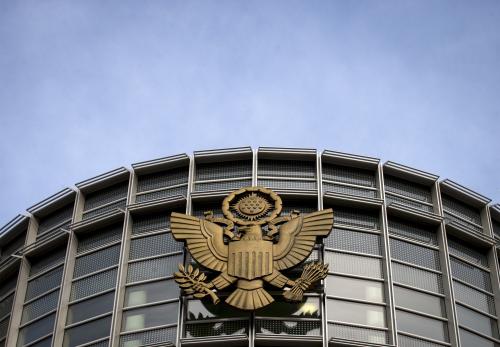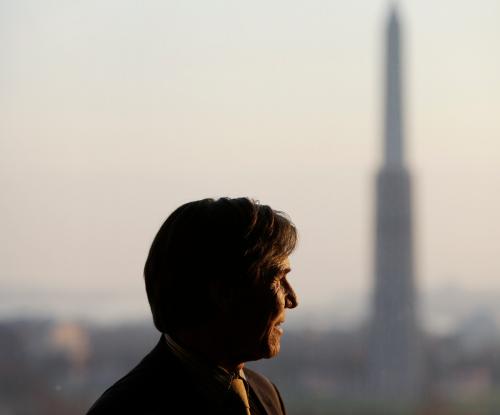Last month’s confirmation of Srikanth Srinivasan as a District of Columbia circuit judge means, nationally today, an even split among active status circuit judges appointed by Democratic and Republican presidents. With President Obama’s simultaneous nomination of three others to the D.C. court, some observers have suggested that “the president is poised to make his mark on the federal district and appeals courts in much the same way Presidents Reagan and George W. Bush did.”
How much of a mark he can make depends on who leaves active status and how many current and potential vacancies thus created Obama can fill. As to the courts of appeal, reversing 2009’s 60-40 ratio of Republican to Democratic active-status appointees may be a stretch, but coming close is arithmetically doable. (The party of appointing president balance among active status judges is hardly a precise predictor of the output of the courts of appeals—or the quality of the judges—but it is a consistent metric and worth examining.)
Fluctuating balances Obama and his two immediate predecessors inherited these party-of-appointing-president balances—numbers and percentages of active judges.
| Active Status Circuit
Judges Appointed by: |
Vacancies in the
179 Authorized Judgeships |
||
|---|---|---|---|
| Republicans | Democrats | ||
| Jan. 20, 1993 | 119 (75%) | 39 (25%) | 21 |
| Jan, 20, 2001 | 76 (50%) | 77 (50%) | 26 |
| Jan. 20, 2009 | 99 (60%) | 65 (40%) | 15 |
Various factors affect how a president can put a mark on the judiciary. For example, compare today’s 50-50 breakdown to that in early June 2005, when the 95 Republican appointees created a 58-42 breakdown among active status judges. The Senate had confirmed essentially the same number of circuit judges—39 at that point for Bush and 36 up to now for Obama. Nine of those Bush appointees replaced Democratic appointees, but half of Obama’s appointees have replaced Republican appointees. President Bush was so far ahead of Obama at this administration mid-point in changing the face of the appellate judiciary because he started with a 50-50 balance, versus the 60-40 ratio that faced Obama on Inauguration Day.
Looking to 2017 Given that 60-40 ratio, Obama’s success has depended and will depend, as noted above, on who creates vacancies that he can try to fill. Almost all judges leave active status—thus creating vacancies—by taking senior status. A circuit judge can do so when she reaches 65 and her years as a circuit (and district) judge plus her age totals 80. Whether or not to leave active status can turn on many factors, such as wanting more leisure time but also wanting to create—or to avoid creating—a vacancy for a particular president to fill.
Here are the numbers for Bush’s first and second terms and Obama’s first (ignoring those who left active service in 2004, 2008 and 201l—no vacancies occurring in those years got nominees those same years):
| Eligible to leave active service† | ||||
|---|---|---|---|---|
| R app’tees eligible | R app’tees leaving | D app’tees eligible | D app’tees leaving | |
| 2001-03 | 29 | 12 (41%)* | 15 | 6 (40%)* |
| 2005-07 | 36 | 15 (42%)* | 21 | 3 (14%) |
| 2009-11 | 38 | 13 (34%)** | 31 | 11 (35%)** |
†-Derived from the Federal Judicial Center’s
Biographical Directory of Federal Judges
. Slight imprecisions are possible, because the directory, for security reasons, does not give living judges’ birth dates/months.*–includes one death of an active status judge not eligible for senior status
**-includes one death of an active status judge eligible for senior status
Republican and Democratic appointees were equally likely to create vacancies in Bush’s and Obama’s first terms, although the percentage of Republican appointees leaving active status declined slightly in Obama’s first term from the rates under Bush. Democratic appointees left active status at a much lower pace in Bush’s second term than they did in his first, perhaps anticipating a Democratic presidential inauguration in 2009.
What might be the balance on Inauguration Day 2017? Start with these facts: five nominations are pending for the 11 current or announced vacant judgeships held by Republican appointees and for three of the eight current or announced vacancies that Democratic-appointees created. And 38 Republican and 37 Democratic appointees will be eligible to take senior status by 2015. Apply to those facts some reasonable but hardly lead-cinch assumptions:
-
- 30 % of Republican appointees and 35% of Democratic appointees will leave active status by the end of 2015;
-
- Obama will nominate candidates for nine of every ten vacancies that occur, reflecting what appears to be a more vigorous nomination pace seen so far this second term;
-
- the Senate will confirm 60% of his nominees (down from the first term’s 72% rate).
This is the resulting comparison.
| January of | J’ships | Rep. app’s | Dem. app’s | Vacancies | Active j’s | % Rep | % Dem |
|---|---|---|---|---|---|---|---|
| 2009 | 179 | 99 (55%) | 65 (36%) | 15 (8%) | 164 | 60% | 40% |
| 2017 | 179 | 69 (38%) | 92 (52%) | 18 (10%) | 162 | 43% | 57% |
We can fiddle with the assumed rates. For one scenario, if only 20% of the eligible Republican appointees took senior status by 2015, and Obama’s nomination rate was 80% for those vacancies, and the confirmation rate for them was 55%, the active-status judge balance in January 2017 would change by a percentage point.
Of course, the wheels could come entirely off the judicial confirmation machinery or, in some fantasy, it could start ticking like a Swiss watch. But, barring some major development, it appears Obama has a good chance of getting the party-of-appointing-president balance close to a mirror image of 2009’s, but no more.
The Brookings Institution is committed to quality, independence, and impact.
We are supported by a diverse array of funders. In line with our values and policies, each Brookings publication represents the sole views of its author(s).










Commentary
How Much of a Mark Can Obama Put on the Courts of Appeal?
June 11, 2013